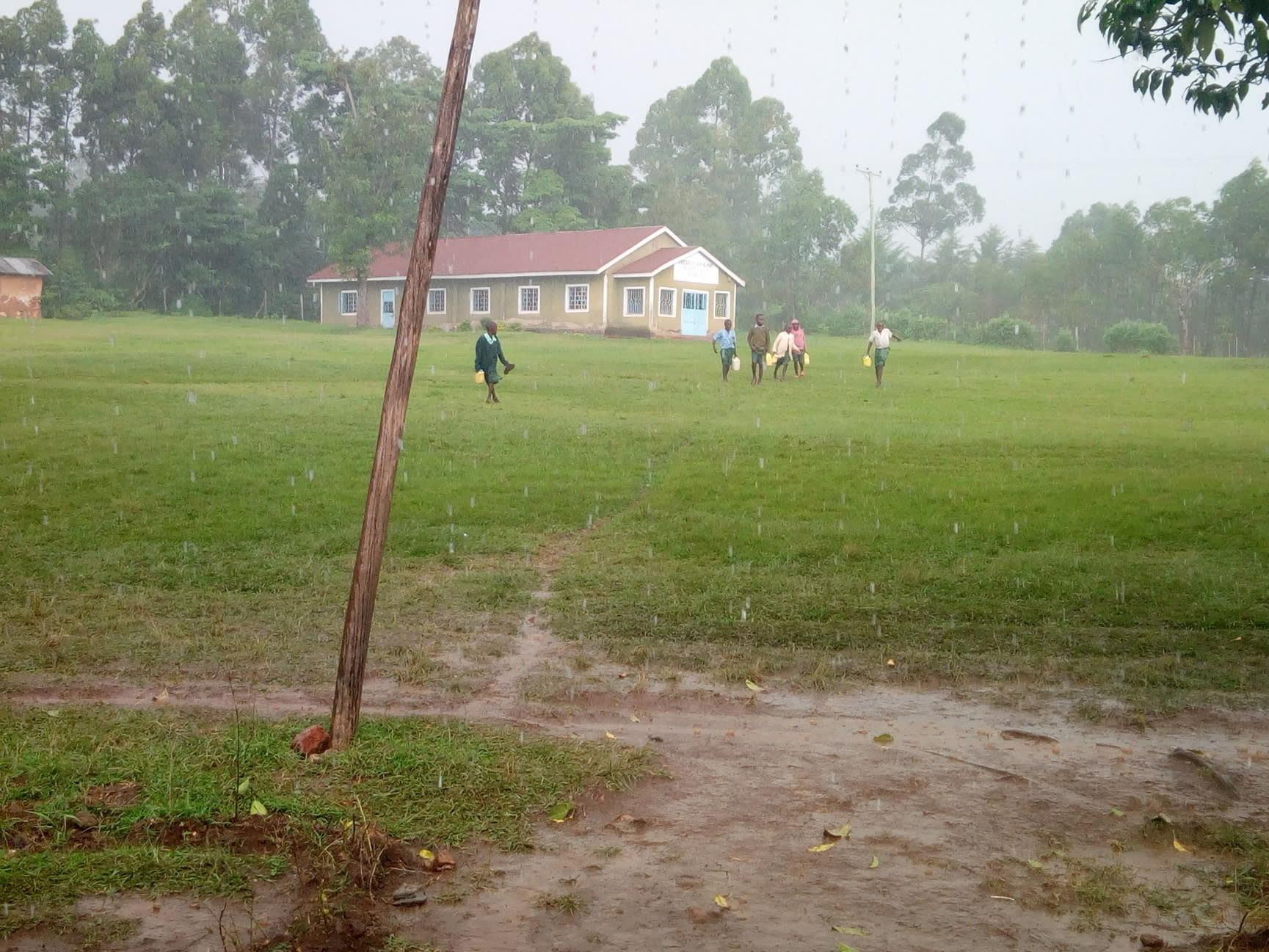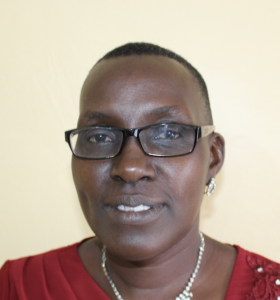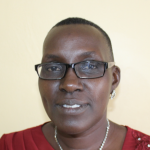March, 2020: Bumbo Primary School Project Complete!
Bumbo Primary School in Kenya now has access to a new source of safe, clean water thanks to the completion of their rain tank, which has the ability to collect 50,000 liters of water. We installed new latrines and handwashing stations for students, and we trained students and staff on improved sanitation and hygiene practices. All of these components work together to unlock the opportunity for these students to live better, healthier lives.
"This is a new dawn in our lives," said teacher Mr. Andrew Muhadi.
"God is so great for bringing us your team [so that] we can now access clean and safe water without going outside [of the school] fetching water. This will enable us to concentrate on our studies, and cleaning our classes will be so easy."

Students give thumbs up for their newly completed rain tank
Rain Tank
Construction for this 50,000-liter rain tank was successful!
Parents, staff, and students helped our artisans gather everything needed for construction. The local Member of the County Assembly, Calystus Ayodi, also coordinated with the school to be sure everything was in order for the project. All the while, the school cooks prepared meals for the artisans, and the school provided accommodations for the artisans during their work. Local women and men helped our artisans with their manual labor, too.
The process officially began with our staff and school administration looking around the school compound to try and determine the best location for a new rain tank. This needed to be the best site with good, clean roofing to catch the rainwater.

Laying the rain tank's stone foundation over excavated base
Then, we cleared the site by excavating the soil within the required measurements to make level ground for the tank foundation. The foundation was cast by laying hardcore on level ground and then reinforcing it using steel, concrete and waterproof cement.

Teamwork inside the tank for cement and plaster work
Both the drawing pipe as well as the washout pipe were affixed as the foundation was laid. The wall was built with ferro-cement techniques through 6 layers. The inner wall was plastered while rough casting was done on the outer part. Finally, the catchment area was dug, plastered, and a short staircase installed.

Attaching the dome structure and working on the access point to the tap
Dome construction could begin after the superstructure had been given enough time to settle. The manhole cover was fitted, inlet pipes were connected to the roof gutters, inlet screens, ventilation pipes (breathers) and overflow pipes were all done to standard. The only challenge we had throughout the entire construction process was in the beginning when we had a shortage of water for construction.
This happened because the students were on school break for the early part of the work, so they were not there to help fetch water for the artisan's work needs. As soon as we shared this information and need with the school's neighbors, however, nearby community members acted swiftly and construction work went on smoothly.

A student enjoying water from the rain tank
Once finished, the rain tank was given 3 weeks to undergo complete curing before it was cleaned and handed over to Bumbo Primary School. As soon as the tank was ready for use, students and staff celebrated the presence of clean water on campus. The event was a great chance for us to acknowledge the school administration and students as the primary parties entrusted with the tools we’ve given, as well as remind them of our continued support as they develop. Happiness, thanksgiving, and appreciation were the order of the day flowing in all directions.

Thumbs up for rain tank water
VIP Latrines
This project funded the installation of 6 new ventilated improved pit (VIP) latrines, half for girls and half for boys. All of these new latrines have cement floors that are designed to be easy to use and clean. And with a rain tank right on school property, there should be enough water to keep them clean.

Girls celebrate their new latrines
Handwashing Stations
The 2 handwashing stations were set up during training and handed over to the student health club. These were placed outside of the girls’ and boys’ latrines to encourage handwashing after latrine use. Health club members will teach other students how to properly wash their hands at the stations, make sure the stations are filled with water, and work to ensure that there is always a cleaning agent such as soap or ash available.

Washing hands outside of the boys' new latrines
New Knowledge
Hygiene and sanitation training was scheduled with the help of the school principal, who ensured that the training date would be convenient for students, staff, and parent representatives. Individual teachers helped by selecting students from each class to represent the others.
26 students, teachers, and parents attended training, which was held inside a classroom to avoid the cold and rainy weather of the day. The level of participation and interest was particularly high for this group of pupils, who were eager to learn all day.

Taking notes at training
We covered a number of topics including personal hygiene such as bathing, oral hygiene, and the 10 steps of handwashing; environmental hygiene; child rights; operation and maintenance of the rain tank, latrines, and handwashing stations; and leadership and governance. In the session on the parts of the rain tank, the students were particularly interested in learning each step of construction that they did not personally witness since they were on school break during part of the construction. This challenged the school staff to explain the process in their own words too as they saw much of what happened.

Students learn the parts of the rain tank with Trainer Victor Musemi
During the leadership and governance session, the students elected their peers to lead their newly formed student health club. One young girl in particular who was elected came from a humble family. This was a sign that the pupils understood from the lesson that everyone can be a great person and leader in life and that you do not need wealth to be elected. The club will be greatly involved in the water, sanitation, and hygiene project management at school and will be responsible for encouraging good health and hygiene practices amongst their peers, teachers, and the larger community.

Handwashing session
We involved stretches, dances, and physical activities in between each topic to keep the pupils’ energy up and their minds active. By the end of the training, each pupil understood their role in sustaining clean water and good health within their school community.
When an issue arises concerning the water project, the students and teachers are equipped with the necessary skills to rectify the problem and ensure the water point works appropriately. However, if the issue is beyond their capabilities, they can contact our team of field officers to assist them. In addition, we will continue to offer them unmatchable support as a part of our ongoing monitoring and maintenance program.

Students and staff at the end of training
"We thank you for your coming and sharing this knowledge with us. In the past, we have not known the 10 steps of handwashing and more so the [reasoning behind the] hygiene and sanitation," said school parent Mr. Benard Machanule, who attended the training.
"The entire Bumbo community is saved through your team and we shall impact and share [this information with] the enter school. Thank you and God bless us all."
Thank you for making all of this possible!



 Rainwater Catchment
Rainwater Catchment
 Rehabilitation Project
Rehabilitation Project


































